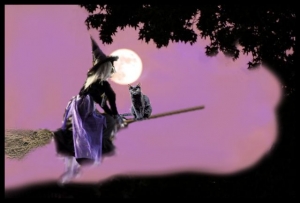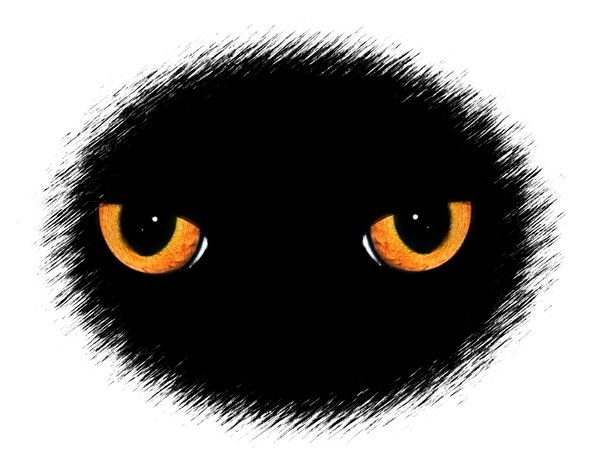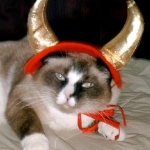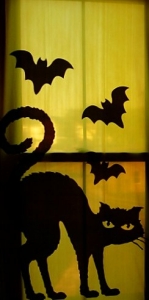Cats and Halloween are tied together by centuries of history. Ghosts and goblins, pumpkins and jack o’lanterns, witches and black cats are all iconic Halloween images.
Cats and Halloween: The Dark Side of Feline History
For hundreds of years, cats have been considered mysterious figures. Cats were domesticated much later than their canine counterparts. Independent, hunting by night and by stealth, cats were often looked upon with suspicion.
In Celtic folklore, people could be reincarnated as cats. This was supposed to be a punishment for sins committed in their human lives. (Given the enviable lives of most modern felines in human households, I have a hard time seeing this as punishment!)
Black cats could blend completely into the night. Thus, black cats were considered particularly sneaky.
Cats seemed unknowable. And it is human nature to fear the unknown. To justify their fear, people decided that cats were evil. According to legend, the Devil himself could appear as a black cat.
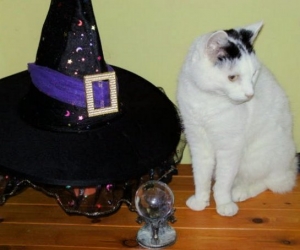 Witches and Their Feline Familiars
Witches and Their Feline Familiars
In the late Middle Ages, cats became associated with witches. Cats were called “witches’ familiars”, and believed to play a role in occult rituals.
Witch hunts also meant cat hunts: Hundreds of cats were burned with their human companions. These companions were usually lonely older ladies who had been accused of witchcraft.
Thousands of cats were killed during the Spanish Inquisition. This meant that there were fewer cats to keep the rats in check. More rats may have allowed the Bubonic Plague to spread more easily than it would have otherwise.
Superstition Becomes Halloween Tradition
So what do medieval beliefs and history have to do with cheesy costumes, bite-sized candy bars, and other trick-or-treating traditions?
None of our traditions exist in a vacuum. Halloween tradition is no exception. What buy propecia uk online happened centuries ago can still impact on our feline friends today.
For most pets at Halloween, some of the worst potential dangers might come from eating chocolate, or chewing on foil candy wrappers.
The noise and chaos of trick-or-treaters might scare pets. If an outside door is left open while candy is being given out, a frightened pet might run out of the house.
Common sense suggests that we should keep our pets safely inside the house when Halloween is being celebrated. We should also keep Halloween candy (and wrappers) out of reach. These are important safety considerations for both cats and dogs.
Sadly, there are Halloween dangers beyond candy wrappers, chocolates, and pet Halloween costumes.
Cats are currently one of the most popular pets. Yet centuries of suspicion and hatred still make their mark today. Although completely unjustified and unacceptable, some people would deliberately harm cats at Halloween.
Black cats may especially be targeted, given their historical associations with witchcraft, black magic, and the Devil.
As pet lovers, we know that cats are more interested in a good nap and an afternoon of birdwatching than in eye of newt and incantations. We must protect our beloved felines from those who lack this understanding.
Further Reading:
https://www.halloween-safety.com/halloween_safety_pets.html
https://www.wyrdology.com/cats/witches.html
https://www.best-cat-art.com/witches-and-cats.html
https://fullyfeline.com/2015/02/superstition-and-cats/
https://irinametzler.org/2013/10/10/witchcraft-and-cats-in-the-middle-ages-revisited/
https://www.medievalists.net/2013/10/02/why-cats-were-hated-in-medieval-europe/

